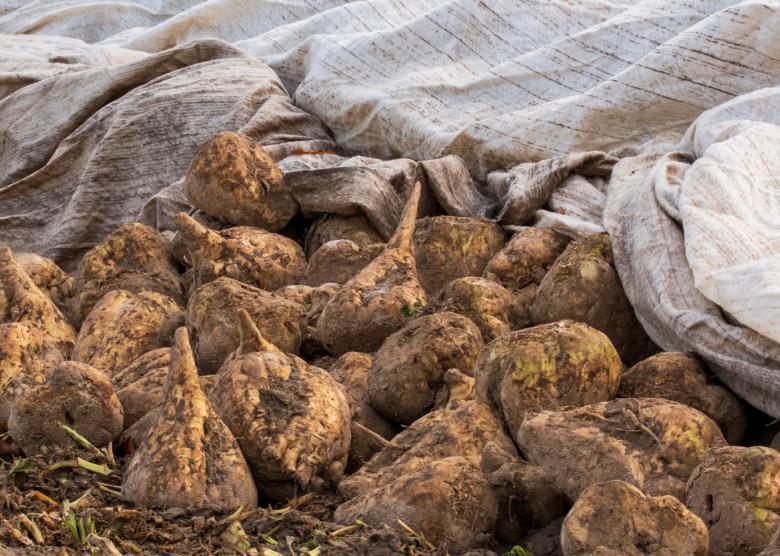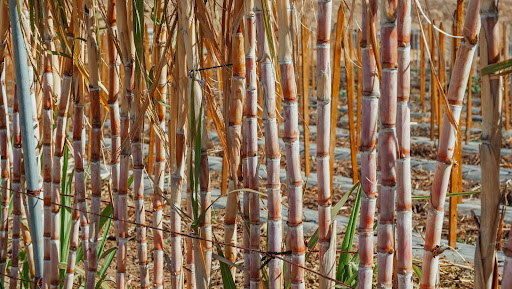Beetroot Sugar Vs Walking Stick: Discover the very best Option for Your Sweetening Requirements
The selection in between beet sugar and walking stick sugar expands beyond mere sweetness; it encompasses variables such as taste accounts, production methods, and nutritional benefits. The earthy touches of beetroot sugar might not enhance every recipe, whereas walking cane sugar is typically preferred for its tidy taste.
Review of Beet Sugar
Beet sugar, typically stemmed from the sugar beetroot plant, is frequently made use of as a vital sweetening representative in various food. The sugar beet, a biennial plant, thrives in pleasant climates and is mostly cultivated in regions such as Europe and North America. beet sugar vs cane. The extraction procedure includes cutting the beets and removing the juice, which is then cleansed and crystallized to create granulated sugar
One notable feature of beet sugar is its chemical make-up, which is almost identical to that of walking stick sugar, as both are composed mainly of sucrose. This resemblance enables beet sugar to be utilized reciprocally with walking cane sugar in recipes and food manufacturing.
Beet sugar is also noted for its flexibility in numerous applications, including baking, beverage formula, and confectionery production. Additionally, the beetroot sugar market has actually made strides in lasting techniques, with numerous manufacturers applying environmentally pleasant farming methods.

Summary of Cane Sugar
Walking cane sugar, derived from the sugarcane plant, is one of the most commonly recognized and used sugar internationally. It is mostly made up of sucrose, a disaccharide that offers a sweet flavor account necessary for numerous culinary applications. Cane sugar is frequently found in granulated form however is likewise offered as raw sugar, brownish sugar, and powdered sugar, each serving distinct purposes in food preparation and baking.
The growing of sugarcane projects in subtropical and tropical regions, contributing to its widespread schedule. The plant grows in cozy environments, calling for sufficient sunlight and water for optimum growth. Walking cane sugar is commonly valued for its natural production approach and very little handling, which preserves its flavor and nutritional homes.
In addition to its culinary uses, cane sugar plays a considerable duty in the food market, working as a chemical, fermentation substratum, and texturizing representative. Its flexibility expands beyond food, discovering applications in beverages, confections, and even cosmetics. With a lengthy background and a solid social presence, cane sugar remains to be a preferred choice for consumers looking for an all-natural sweetening alternative.
Manufacturing Procedures Compared
When comparing the manufacturing procedures of beet sugar and cane sugar, it becomes clear that each technique reflects the distinct features of its resource material. Beetroot sugar production begins with collecting sugar beets, which are then cleaned, sliced, and subjected to warm water extraction to liquify the sugar.
In contrast, walking stick sugar manufacturing includes gathering sugarcane stalks, which are crushed to extract juice. The cane sugar procedure incorporates a longer milling and pushing stage, which helps in removing optimum juice from the stalks.
Both procedures highlight effectiveness, but the techniques highlight distinctions in equipment and power usage. Beetroot sugar has a tendency to have a more straightforward handling path, while walking cane sugar production can be more complex as a result of the fibrous nature of the cane stalks. Eventually, these distinctions shape the features of the sugars generated.
Nutritional Profiles and Advantages
Sugar, a staple in lots of diets, varies in dietary accounts and benefits depending upon its source. Both beetroot sugar and cane sugar largely include sucrose, supplying similar caloric material-- about 4 calories per gram. Subtle distinctions can impact consumer selections and assumptions.
Beet sugar is acquired from sugar beetroots, which contain percentages of minerals and vitamins, such as potassium and calcium, yet these nutrients exist in negligible amounts when eaten in typical amounts. Alternatively, walking cane sugar, extracted from sugarcane, might supply comparable trace nutrients, yet the differences are greatly insignificant and minimal in the context of a well balanced diet regimen.
One notable element is the ecological effect of each source, which can indirectly influence nutritional options. Beet sugar manufacturing is typically viewed as even more sustainable because of lower water use compared to walking stick sugar farming. Additionally, some people favor beet sugar because of its non-GMO standing in specific areas, potentially lining up with health-conscious customer patterns.

Flavor Distinctions and Uses
Distinctive taste accounts define beet sugar internet and cane sugar, influencing their applications in various culinary contexts. Beetroot sugar has a somewhat earthy preference, which can be associated to the dirt in which the beets are grown.
In sensible terms, beetroot sugar and walking cane sugar can normally be used interchangeably in many recipes. Nonetheless, bread cooks and culinary professionals commonly lean towards walking stick sugar for its premium capacity to caramelize, which is important in creating complex flavor accounts in confections and sauces. In addition, cane sugar is preferred in beverages, as its flavor liquifies flawlessly, keeping the honesty of the drink.
Inevitably, the selection in between beetroot and walking stick sugar may boil down to personal preference and the specific demands of the dish, with each type offering one-of-a-kind qualities that can improve the culinary experience.
Final Thought
In summary, the choice in between beetroot sugar and cane sugar hinges on particular culinary applications and personal wellness considerations. While beetroot sugar presents a somewhat earthy taste and lasting manufacturing benefits, walking cane sugar's cleaner sweetness is often chosen in baking and fragile meals. Evaluating the production procedures, dietary accounts, address and taste distinctions can direct customers in selecting the most appropriate sweetener for their needs, ensuring both taste fulfillment and placement with dietary choices.
Beetroot sugar, frequently derived from the sugar beetroot plant, is frequently made use of as an essential sweetening representative in various food products. Walking stick sugar is generally discovered in granulated type but is also available as raw sugar, brown sugar, and powdered sugar, each serving distinctive functions in food preparation and baking.
When contrasting the manufacturing processes of beetroot sugar and cane sugar, it becomes clear that each approach mirrors the special attributes of its resource material. Beetroot sugar production starts with harvesting sugar beetroots, which are then cleaned, cut, and subjected to warm water removal to dissolve the sugar. Beet sugar has a tendency to have a more straightforward processing route, while walking cane sugar production can be a lot more complex Extra resources due to the coarse nature of the walking stick stalks.